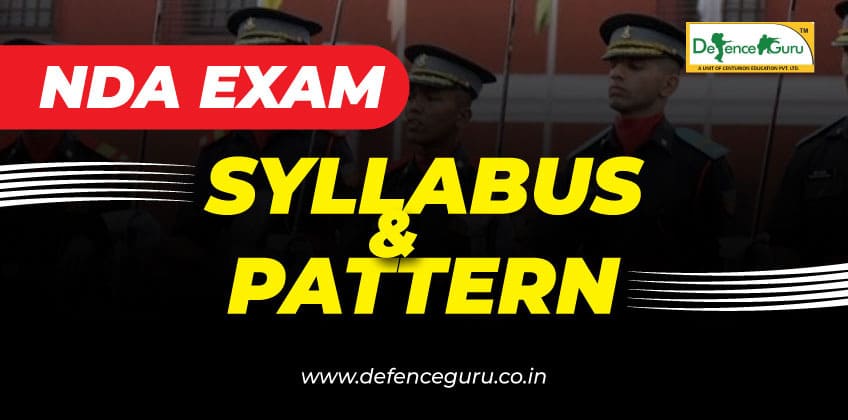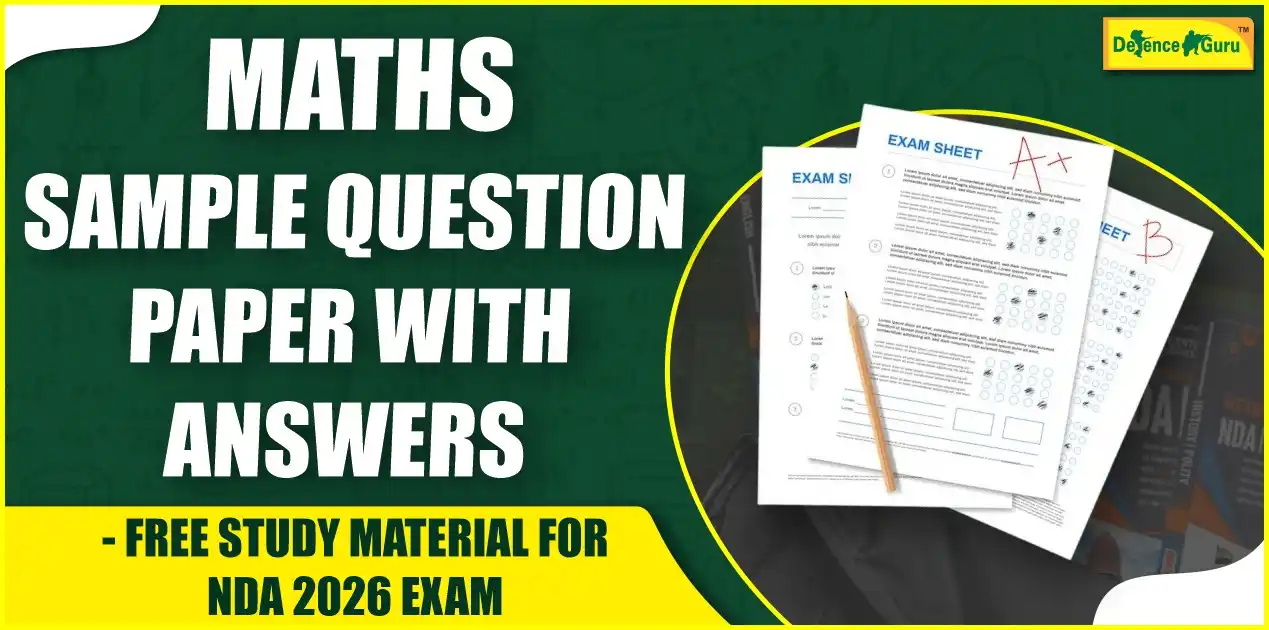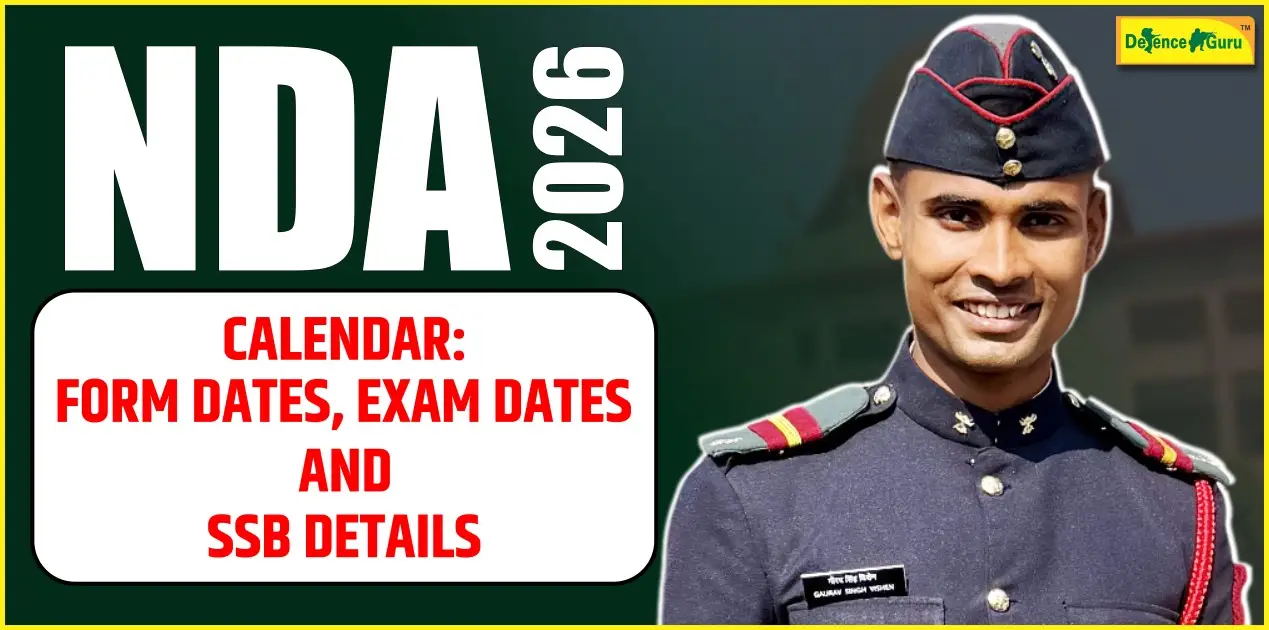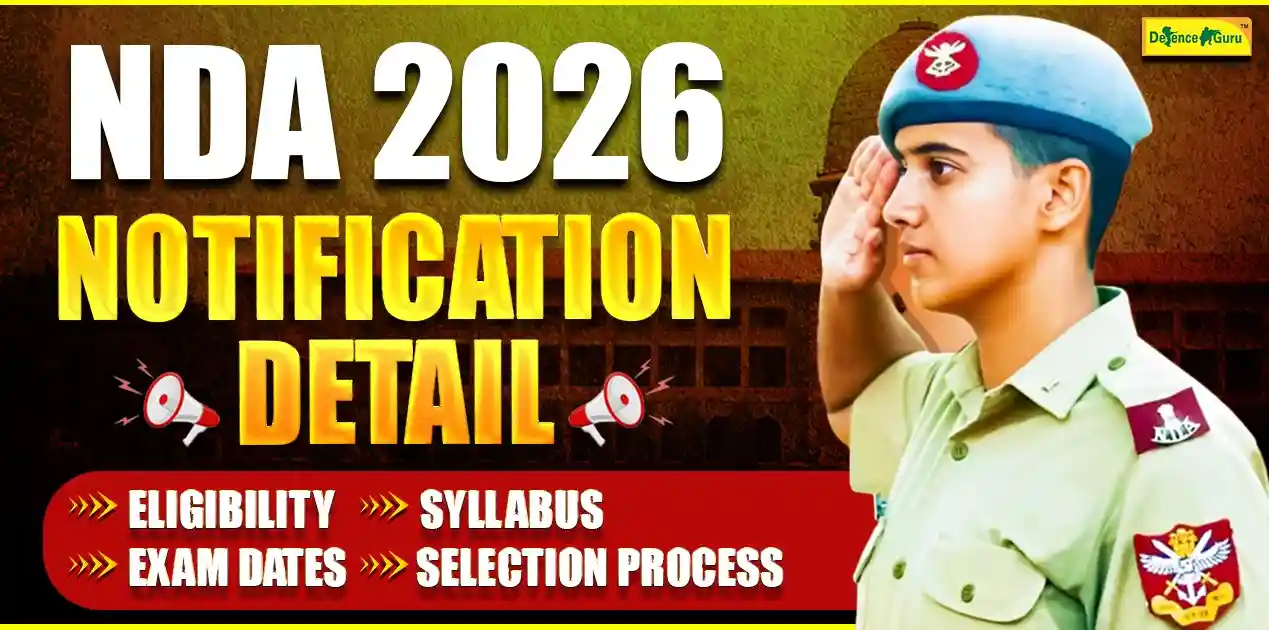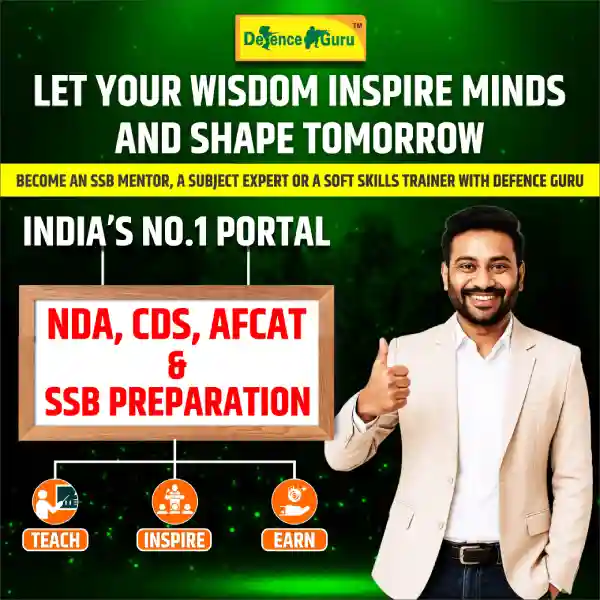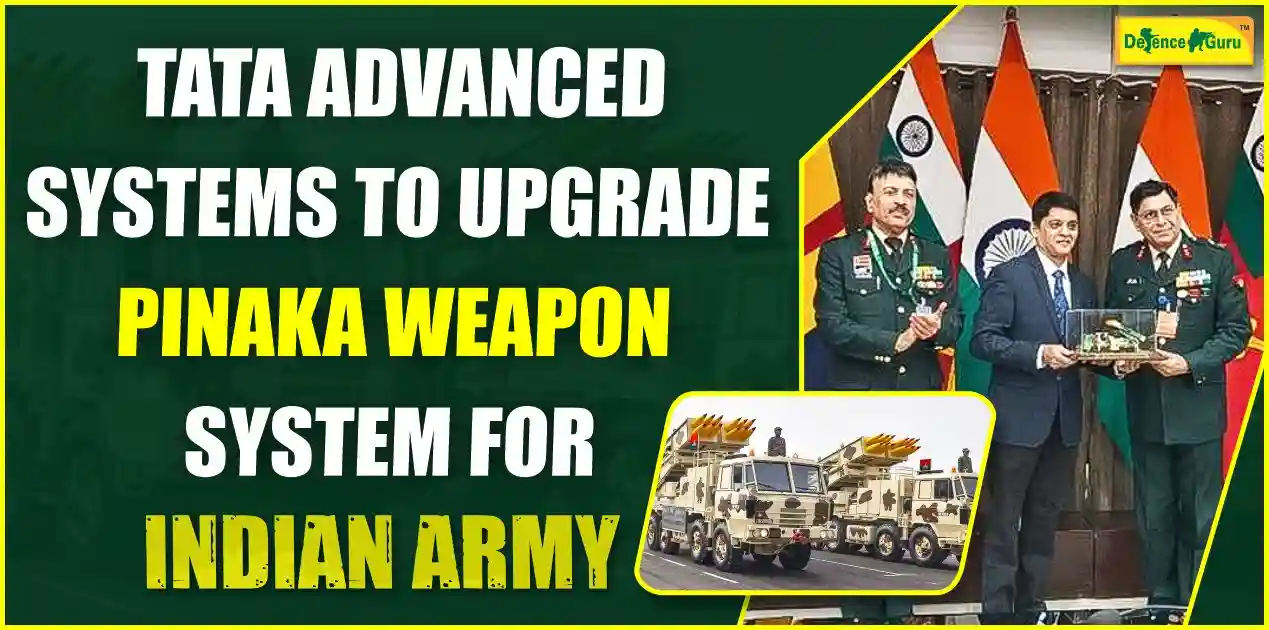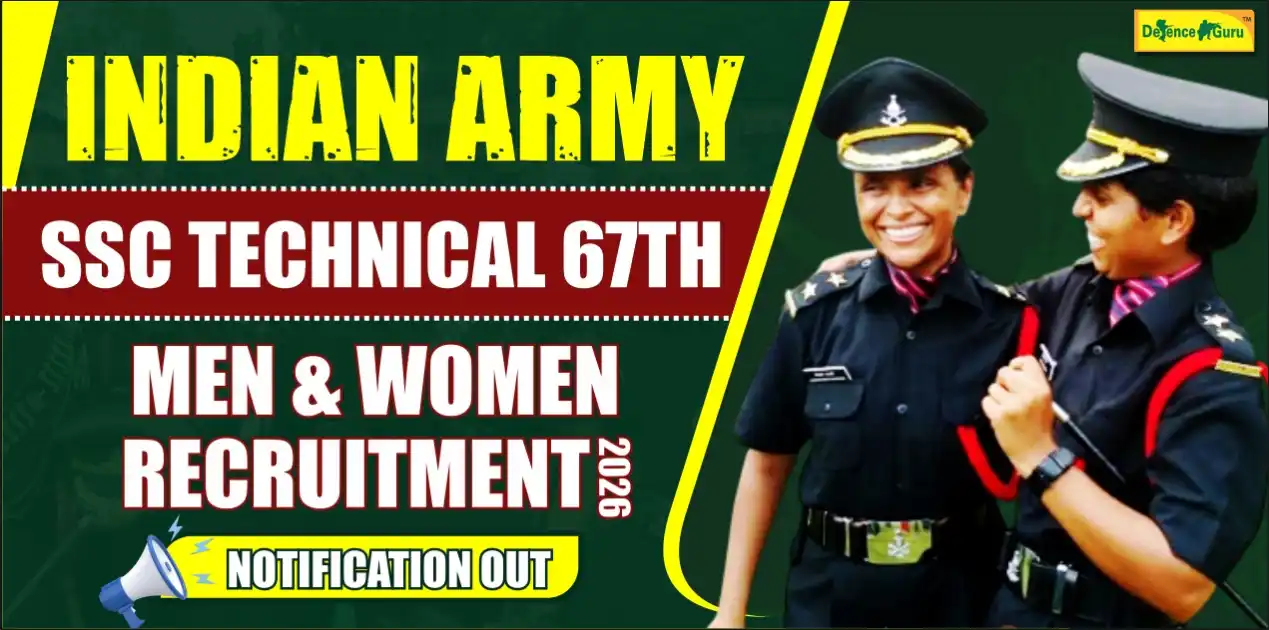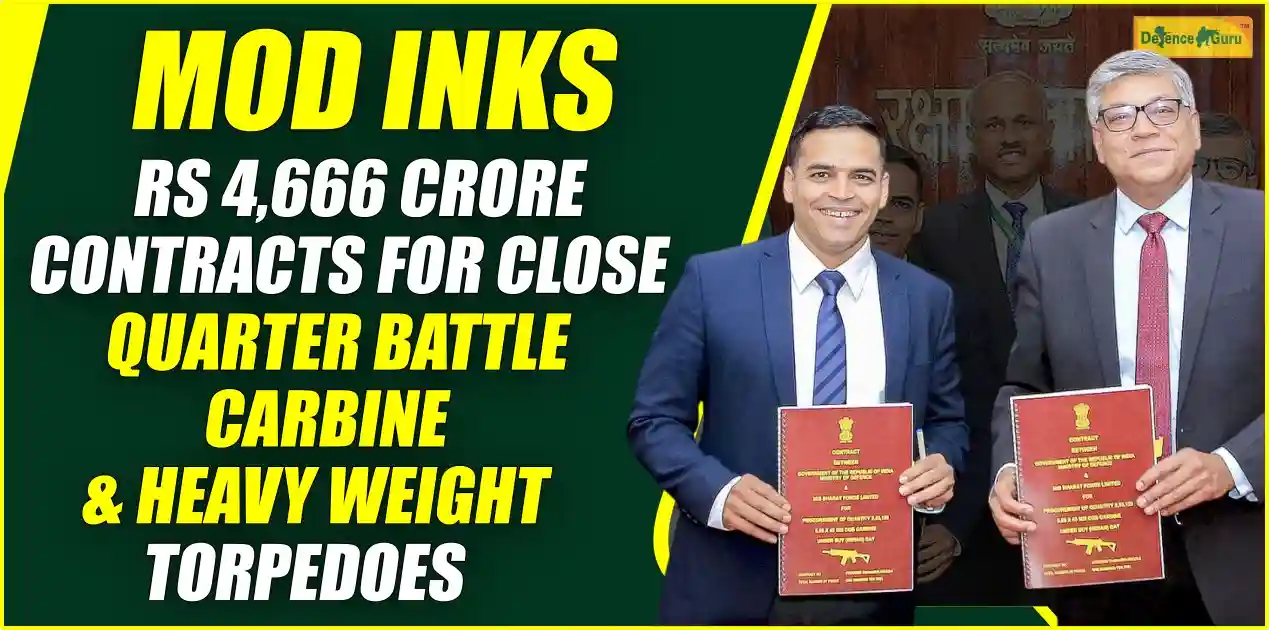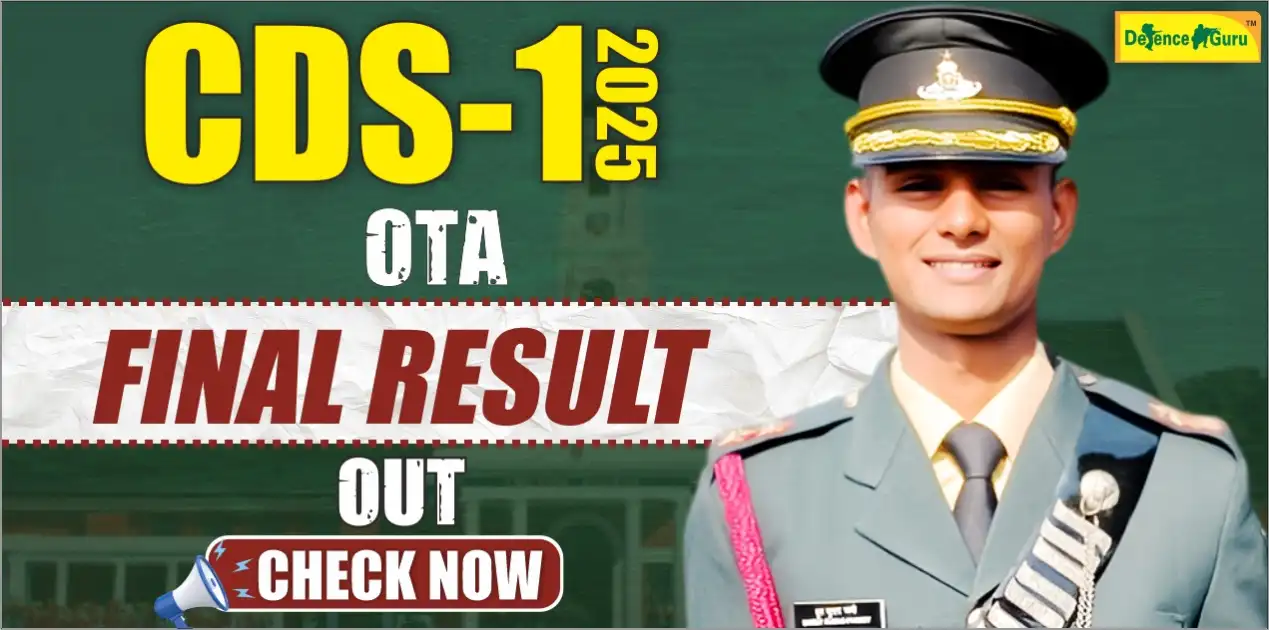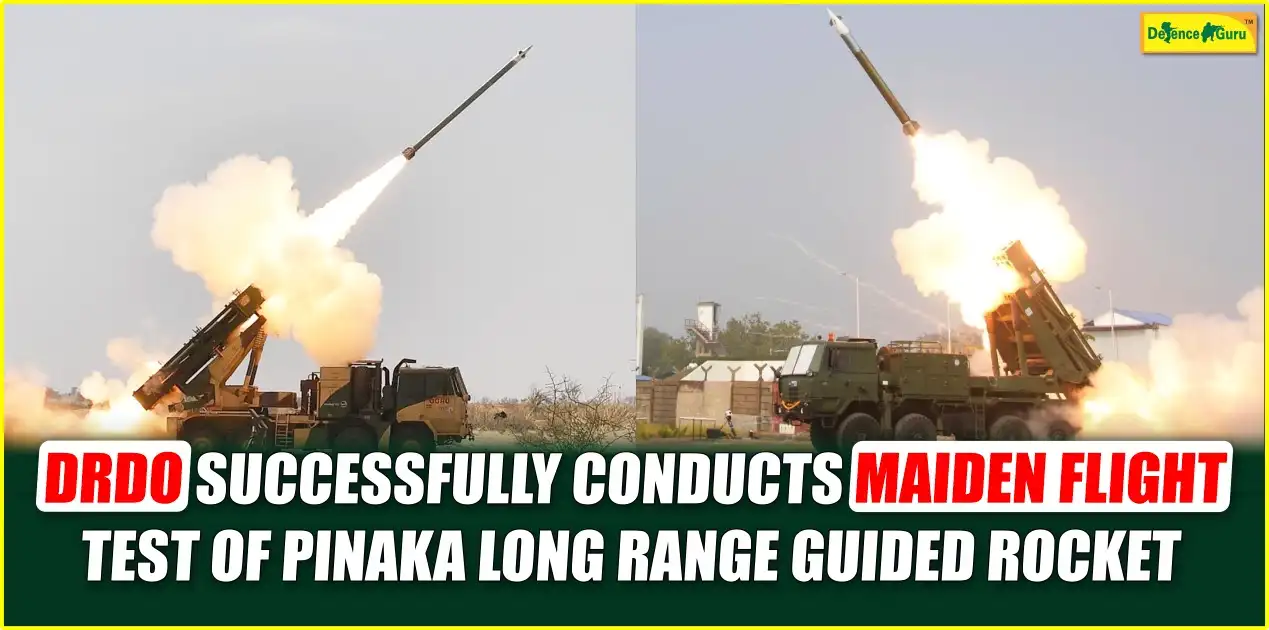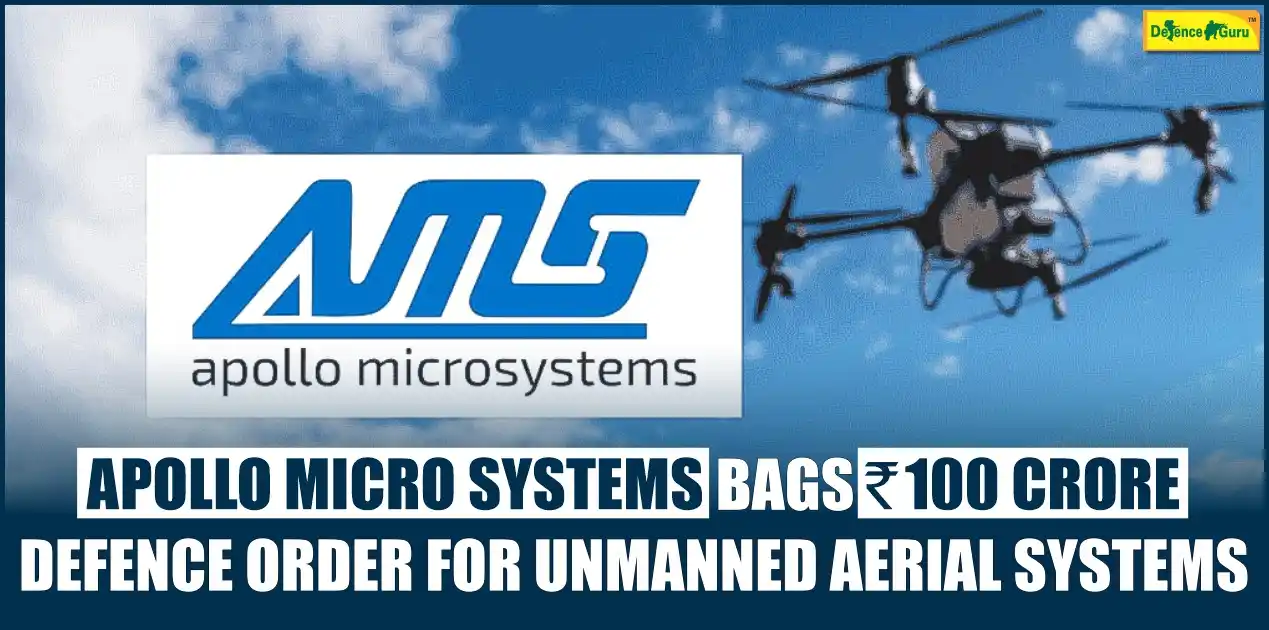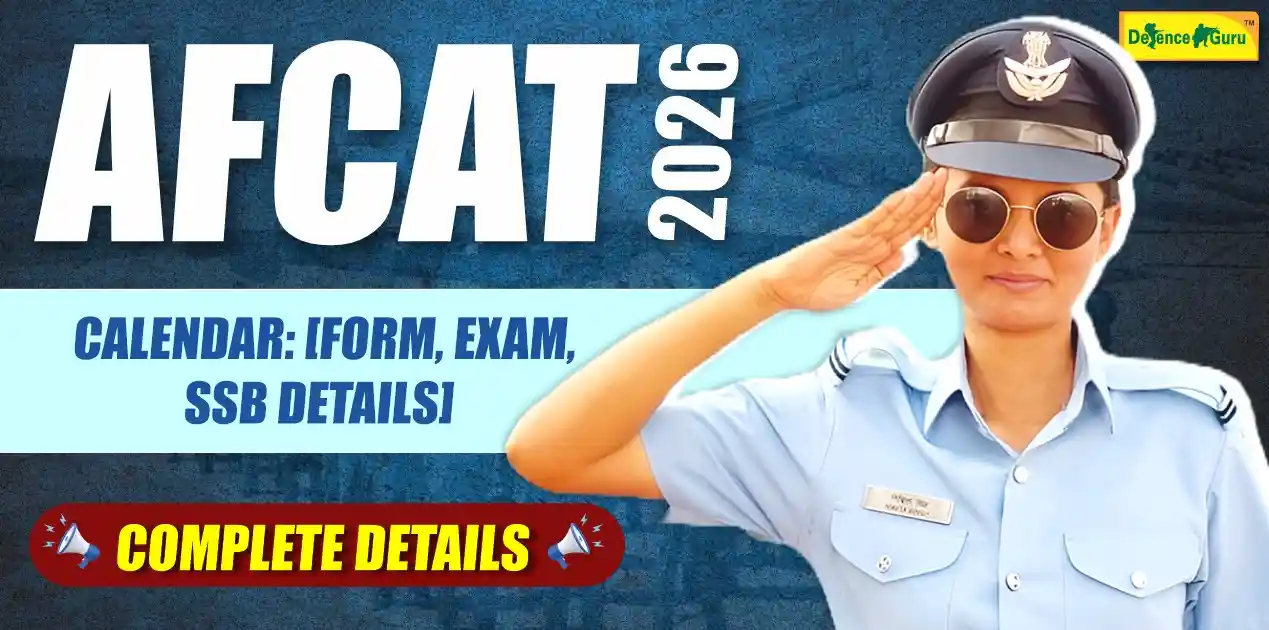The NDA-2 2023 Exam is going to take place on 3rd September. So, It will be better to start preparing for the NDA-2 2023 Exam from now only. NDA Exam is one of the toughest exams in India. It requires extensive preparation and a prudent strategy for clearing the NDA Exam. To help Candidates to prepare for NDA-2 2023, we are going to provide NDA-2 Exam Syllabus and Exam Pattern.
The NDA (National Defence Academy) exam is a highly competitive entrance exam conducted by the Union Public Service Commission (UPSC) of India for candidates who wish to join the Indian Army, Navy, or Air Force as an officer. It is a two-stage selection process that includes a written exam and an SSB (Service Selection Board) interview. The written exam consists of two papers, Mathematics and General Ability Test (GAT), and is conducted in offline mode. The Mathematics paper is 300 marks, while the GAT paper is 600 marks. The total duration of the written exam is 5 hours. The GAT paper includes topics like English, General Knowledge, Physics, Chemistry, Geography, History, and Current Affairs.
Candidates who qualify for the written exam are called for the SSB interview, which is a five-day selection process. It includes various tests like Psychological Tests, Group Testing Officer’s Tasks, Interviews, and conferences.
NDA-2 Exam Pattern
The exam Pattern of NDA-2 2023 is following as
|
NDA Written Exam Pattern |
|
|
Particulars |
Details |
|
Papers |
|
|
Total Questions |
|
|
Total Marks |
|
|
Time Duration |
|
|
SSB Interview |
|
NDA-2 Exam Syllabus
The detailed Syllabus of the NDA-2 2023 Exam is following as
|
NDA Mathematics Syllabus |
|
|
Sections |
Syllabus |
|
ALGEBRA |
Concept of set, operations on sets, Venn diagrams.De Morgan laws, Cartesian product, relation, equivalence relation. Representation of real numbers on a line. Complex numbers—basic properties, modulus, argument, cube roots of unity. Binary system of numbers. Conversion of a number in a decimal system to a binary system and vice-versa. Arithmetic, Geometric and Harmonic progressions. Quadratic equations with real coefficients. Solution of linear inequalities of two variables by graphs. Permutation and Combination. Binomial theorem and its applications. Logarithms and their applications. |
|
MATRICES AND DETERMINANTS |
Types of matrices, operations on matrices. Determinant of a matrix, basic properties of determinants. Adjoint and inverse of a square matrix, Applications- Solution of a system of linear equations in two or three unknowns by Cramer’s rule and by Matrix Method. |
|
TRIGONOMETRY |
Angles and their measures in degrees and in radians. Trigonometric ratios. Trigonometric identities Sum and difference formulae. Multiple and Sub-multiple angles. Inverse trigonometric functions. Applications-Height and distance, properties of triangles.
|
|
ANALYTICAL GEOMETRY OF TWO AND THREE DIMENSIONS |
Rectangular Cartesian Coordinate system. Distance formula. Equation of a line in various forms. The angle between two lines. Distance of a point from a line. Equation of a circle in standard and in a general form. Standard forms of parabola, ellipse, and hyperbola. Eccentricity and axis of a conic. Point in a three-dimensional space, the distance between two points. Direction Cosines and direction ratios. Equation two points. Direction Cosines and direction ratios. Equation of a plane and a line in various forms. The angle between two lines and the angle between two planes. Equation of a sphere.
|
|
DIFFERENTIAL CALCULUS |
Concept of a real-valued function–domain, range, and graph of a function. Composite functions, one-to-one, onto, and inverse functions. The notion of limit, Standard limits—examples. Continuity of functions—examples, algebraic operations on continuous functions. Derivative of function at a point, geometrical and physical interpretation of a derivative—applications. Derivatives of sum, product, and quotient of functions, a derivative of a function with respect to another function, a derivative of a composite function. Second-order derivatives. Increasing and decreasing functions. Application of derivatives in problems of maxima and minima.
|
|
INTEGRAL CALCULUS AND DIFFERENTIAL EQUATIONS |
Integration as inverse of differentiation, integration by substitution and by parts, standard integrals involving algebraic expressions, trigonometric, exponential, and hyperbolic functions. Evaluation of definite integrals—determination of areas of plane regions bounded by curves—applications. Definition of order and degree of a differential equation, formation of a differential equation by examples. A general and particular solution of differential equations, solution of the first order and first-degree differential equations of various types—examples. Application in problems of growth and decay. |
|
VECTOR ALGEBRA |
Vectors in two and three dimensions, magnitude, and direction of vector. Unit and null vectors, the addition of vectors, scalar multiplication of a vector, scalar product or dot product of two vectors. Vector product or cross product of two vectors. Applications—work done by a force and moment of a force and in geometrical problems.
|
|
STATISTICS AND PROBABILITY |
Statistics: Classification of data, Frequency distribution, cumulative frequency distribution—examples. Graphical representation—Histogram, Pie Chart, frequency polygon— examples. Measures of Central tendency—Mean, median, and mode. Variance and standard deviation—determination and comparison. Correlation and regression.
|
|
Probability: Random experiment, outcomes, and associated sample space, events, mutually exclusive and exhaustive events, impossible and certain events. Union and Intersection of Events. Complementary, elementary, and composite events. Definition of probability—classical and statistical—examples. Elementary theorems on probability—simple problems. Conditional probability, Bayes’ theorem—simple problems. Random variable as function on a sample space. Binomial distribution, examples of random experiments giving rise to Binomial distribution.
|
|
|
NDA General Ability Test Paper Syllabus |
|
|
Parts |
Sections |
|
Part (A)- English |
Grammar & usage, Comprehension & cohesion, Spotting of errors, Para Jumbling, Fill in the blanks, Synonyms & Antonyms, Vocabulary, Cloze Test, Idioms & Proverbs, Completion of Sentence & Para, Sentence Correction & Improvement. |
|
Part (B)- General Knowledge |
Physics
Physical Properties and States of Matter, Mass, Weight, Volume, Density, and Specific Gravity, Principle of Archimedes, Pressure Barometer. The motion of objects, Velocity, and Acceleration, Newton’s Laws of Motion, Force and Momentum, Parallelogram of Forces, Stability and Equilibrium of bodies, Gravitation, elementary ideas of work, Power, and Energy. Effects of Heat, Measurement of Temperature and Heat, change of State and Latent Heat, Modes of Transference of Heat. Sound waves and their properties, Simple musical instruments. Rectilinear propagation of Light, Reflection, and refraction. Spherical Mirrors and Lenses, Human Eye. Natural and Artificial Magnets, Properties of a Magnet, Earth as a Magnet.Static and Current Electricity, conductors and Nonconductors, Ohm’s Law, Simple Electrical Circuits, Heating, Lighting and Magnetic effects of Current, Measurement of Electrical Power, Primary and Secondary Cells, and Use of X-Rays.General Principles in the working of the following: Simple Pendulum, Simple Pulleys, Siphon, Levers, Balloon, Pumps, Hydrometer, Pressure Cooker, Thermos Flask, Gramophone, Telegraphs, Telephone, Periscope, Telescope, Microscope, Mariner’s Compass; Lightning Conductors, Safety Fuses. |
|
Chemistry
Physical and Chemical changes. Elements, Mixtures and Compounds, Symbols, Formulae, and simple Chemical Equations, Law of Chemical Combination (excluding problems). Properties of Air and Water.Preparation and Properties of Hydrogen, Oxygen, Nitrogen, and Carbon Dioxide, Oxidation, and Reduction. Acids, bases, and salts. Carbon—different forms. Fertilizers—Natural and Artificial. The material used in the preparation of substances like Soap, Glass, Ink, Paper, Cement, Paints, Safety Matches, and Gun-Powder. Elementary ideas about the structure of Atom, Atomic Equivalent and Molecular Weights, and Valency. |
|
|
Biology
Difference between the living and nonliving. Basis of Life—Cells, Protoplasms and Tissues. Growth and Reproduction in Plants and Animals.Elementary knowledge of the Human Body and its important organs.Common Epidemics, their causes and Prevention. Food Source of Energy for Man. Constituents of food, balanced diet. The Solar System—Meteors and Comets, Eclipses.Achievements of Eminent Scientists. |
|
|
History
A broad survey of Indian History, with emphasis on Culture and Civilization.Freedom Movement in India. Elementary study of Indian Constitution and Administration. Elementary knowledge of Five Year Plans of India. Panchayati Raj, Co-operatives, and Community Development. Bhoodan, Sarvodaya, National Integration and Welfare State, Basic Teachings of Mahatma Gandhi.Forces shaping the modern world; Renaissance, Exploration, and Discovery; War of American Independence. French Revolution, Industrial Revolution, and Russian Revolution. Impact of Science And Technology on Society. Concept of one World, United Nations, Panchsheel, Democracy, Socialism, and Communism. Role of India in the present world. |
|
|
Geography
The Earth, its shape and size. Latitudes and Longitudes, Concept of time. International Date Line. Movements of Earth and their effects. Origin of Earth. Rocks and their classification; Weathering—Mechanical and Chemical, Earthquakes and Volcanoes. Ocean Currents and Tides Atmosphere and its composition; Temperature and Atmospheric Pressure, Planetary Winds, Cyclones and Anticyclones; Humidity; Condensation and Precipitation; Types of Climate, Major Natural Regions of the World. Regional Geography of India—Climate, Natural vegetation. Mineral and Power resources; location and distribution of agricultural and Industrial activities. Important Sea ports and main sea, land, and air routes of India. Main items of Imports and Exports of India. |
|
|
Current Affairs
Knowledge of Important events that have happened in India in recent years. Current important world events.Prominent personalities—both Indian and International including those connected with cultural activities and sports. |
|
Based on the NDA-2 2023 Exam Syllabus and Pattern, it is clear that candidates need to have a well-rounded knowledge of various subjects to clear the written test and SSB interview. The Mathematics and GAT sections will test the candidate's aptitude and awareness, respectively. Aspirants need to prepare for the exam thoroughly and stay updated on current affairs and general knowledge. Additionally, they must have a positive attitude and excellent communication skills to excel in the SSB interview. With the right preparation and dedication only, Candidates will be able to clear a tough exam like NDA-2 2023 Exam which is going to take place on 3rd September.
Read More:
Top 5 NDA Online Coaching in India

